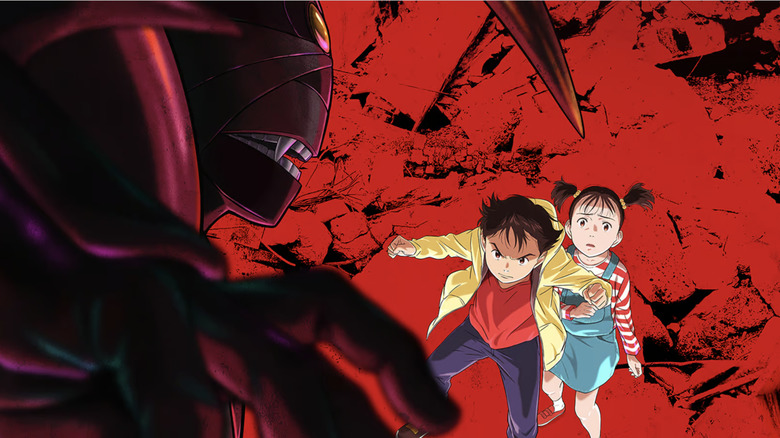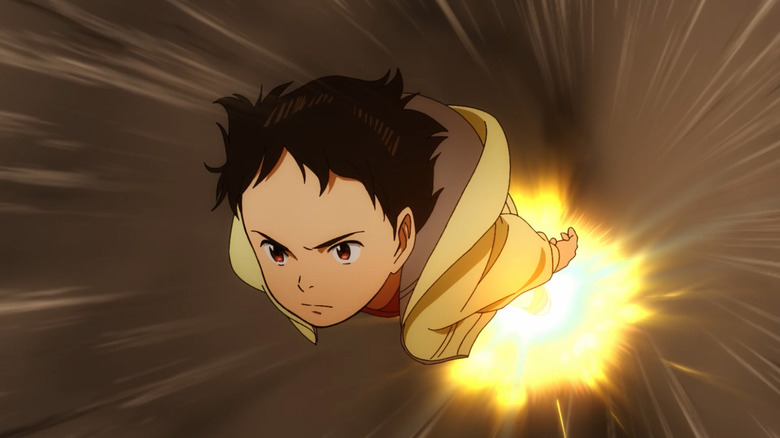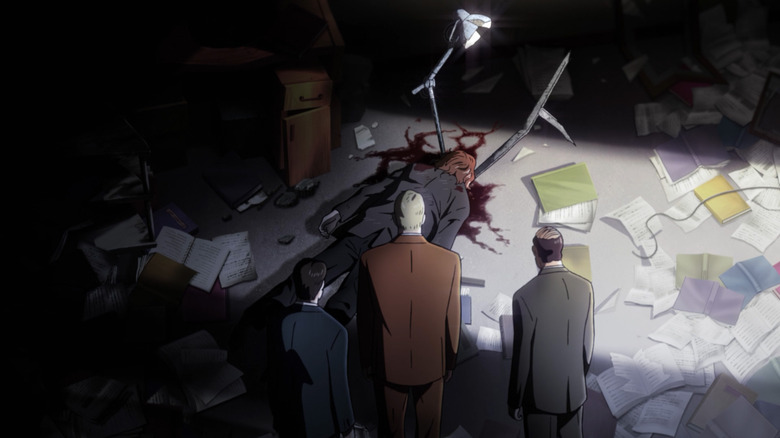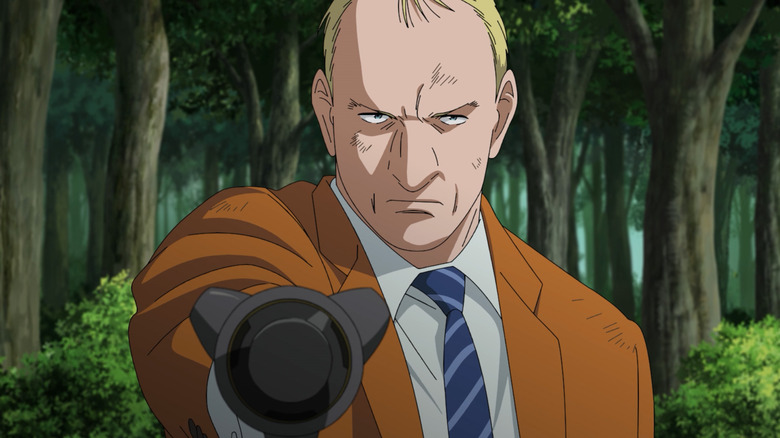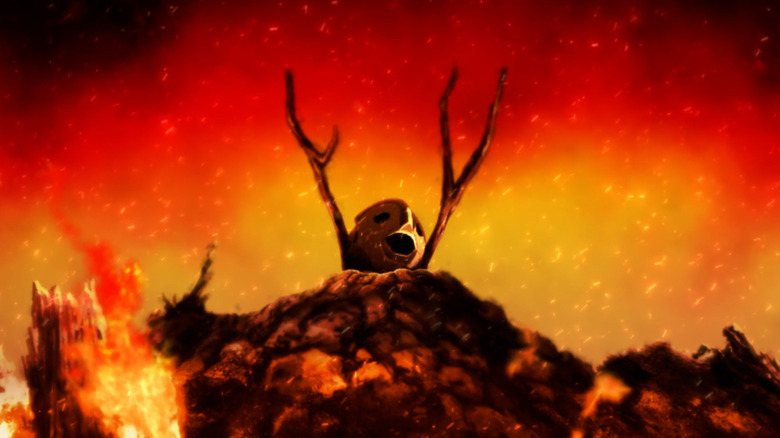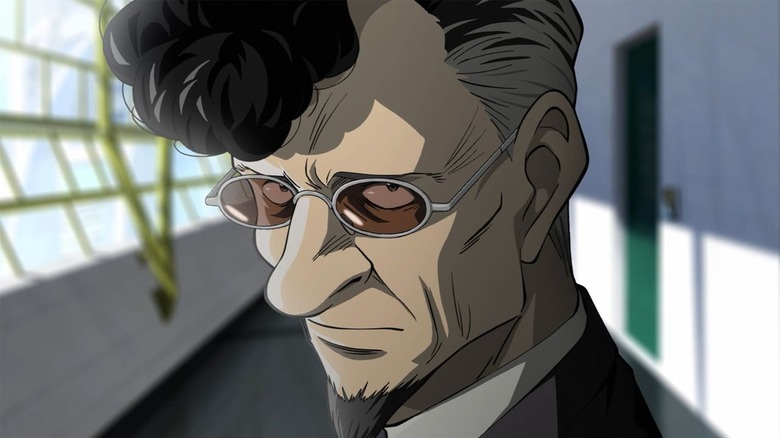Pluto Review: Astro Boy Meets Watchmen In Stunning New Anime
Osamu Tezuka's "Astro Boy" birthed manga, and in turn, anime, as we know these mediums today. Manga author Naoki Urasawa has said that the "Astro Boy" arc "The Greatest Robot on Earth" was the first comic he ever read. Enter "Pluto," Urasawa's reimagining of that story (co-written with Takashi Nagasaki, supervised by Tezuka's son Makoto), now adapted itself into an anime mini-series distributed by Netflix.
I'm only tangentially familiar with Tezuka's original manga, essentially a sci-fi "Pinocchio." In a futuristic world where robots are commonplace, young Tobio Tenma dies in a car crash. So, his scientist father creates a robotic replicant of his son. The result is the android superhero Astro Boy. "Pluto" fills in the basics of this backstory but doesn't dwell on them, for "Atom" (Astro's name in the original Japanese and, thus, "Pluto") is just one player in a larger story.
Across the world, someone is killing both the most advanced robots and the human scientists who built or advocated for them. At the sites of these murders are makeshift "horns," where sticks are placed beside the corpses' heads or carved into the lands. These horns conjure images of the Devil — or Pluto, the Roman God of Death ("Hades" for you Greek originalists). The killer is kept in shadow until the penultimate episode, but these horns give us the first clue of their appearance.
Atom is one of these targeted robots, alongside six others: Swiss nature guide Mont-Blanc, butler North No. 2, the wrestlers Brando and Hercules, photon-controlling Epsilon, and Europol police inspector Gesicht. The latter is our primary POV character, because "Pluto" is at its core a murder mystery.
An anime 20 years in the making
As I read the manga and then absorbed this new anime, the thought of "Watchmen" couldn't escape my mind, and not just because both it and "Pluto" are murder mystery comics. What Alan Moore and Dave Gibbons did with "Watchmen," Urasawa and Nagasaki do with "Pluto" — take comic characters of old (the heroes of Charlton Comics in "Watchmen," Tezuka's creations in "Pluto") and reimagine them through their artistic lens.
Naoki Urasawa is a manga legend, but only about half of his works have been adapted to anime: "Yawara!" (about the eponymous Japanese girl training to be an Olympic Judo champion with her grandfather), "Master Keaton" (an adventure story about a part-time archaeologist, part-time insurance investigator) and his magnum opus "Monster," (a horror-thriller about a Japanese-German doctor hunting a serial killer whose life he once saved).
"Pluto" now joins their esteemed ranks; the anime was first announced in 2017 and now arrives on the 20th anniversary of the manga ("Pluto" ran from 2003 to 2009). The 2003 start date isn't incidental. Part of the backstory of "Pluto" is the "39th Central Asian War," where the United States of Thracia (apparently it was the Greeks who sailed West in this alternate history), led an invasion of Persia. Supposedly, the UST needed to dispose of dictator Darius XIV, who was building a secret robot army. No such army existed, but the war went ahead and the Persian people suffered. Pluto's robot and human victims all served in this war and their connection to it is crucial to unraveling the mystery.
If this sounds like a transparent allegory for the Iraq War, it should; that invasion also began in 2003. The war has gone from timely commentary in the manga to a sobering reminder of historical atrocity in the anime.
A robot murder mystery
It's often been said (by myself and other writers here at /Film) that Urasawa draws faces quite differently from most other manga artists. It boils down to three important features: noses, hair, and wrinkles. Rather than the thin, sharp noses of most anime characters, those in "Pluto" have huge (but realistically shaped) noses. Plenty of them are balding too, with bare foreheads, and even the ones that aren't still have realistic hairstyles. As for wrinkles, android and human characters alike are drawn with detailed lines and shadows on their skin to evoke age.
Urasawa reshapes Tezuka's characters in his more naturalistic style. Astro Boy's signature outfit is green boxers and red boots, but in "Pluto," Atom wears a hoodie and jeans like a normal kid. Gesicht and several other robots look plenty human too, rather than the tin-plated automatons as originally drawn by Tezuka. There's a recursive effect here; just as the audience might be wowed by the realistic detail of the art, the human characters often can't tell who is an uncanny android and who isn't.
Can robots be human though? Part of the question lies in memory. If experiences and our imperfect recollections of them are what make us who we are, then can robots — who can remember in exact detail and, if they so choose, delete their memories — experience life the same as us? In "Pluto," androids do dream — not of electric sheep, though, but of their regrets. Forgetting can be a blessing, but remembering is a responsibility.
What makes a perfect robot?
Usually, stories about robots discovering emotion only focus on the positive side. Take Data (Brent Spiner) having his first laugh in the "Star Trek" episode "Deja Q," or in Steven Spielberg's "A.I. Artificial Intelligence" where David (Haley Joel Osment) wants to be a real boy so his "mother" can love him as he loves her.
"Pluto" digs deeper. These robots do love, from their spouses to their adopted children. Atom and his little sister Uran's relationship in particular is quite cute, as they bicker with hidden care like a real-life brother and sister, while Epilson raises Persian war orphans like a father.
However, the range of emotion is more than that. Dr. Tenma, Atom's father, argues that to be perfect, robots must be fallible and capable of hate. In the series' world, Isaac Asimov's first law of robotics ("A robot may not injure a human being or, through inaction, allow a human being to come to harm") is a genuine legal and programming principle. This only keeps robots from being "perfect" — humans, for better or worse, kill each other all the time. The only robot to defy this pacifistic rule was the imprisoned Brau-1589. If Gesicht is the Will Graham of this story and Pluto is Francis Dolarhyde, then Brau is Hannibal Lecter. Atom muses he might be the most human AI of all. That's not to say hate is everything — by the series' end, Atom proves that just because one can hate doesn't mean that one will choose to.
Adapting for anime
The "Pluto" anime was co-produced by studio Genco and Tezuka Productions, animated by studio M2, and directed by Toshio Kawaguchi (an animation staff alum of "Akira" and "Neon Genesis Evangelion").
There are eight hour-long episodes, one for each volume of the manga, and the story flows just like its source material. At times, this structure doesn't always do the series favors. Episodes can bounce back and forth without much rhythm, especially due to the sprawling cast.
Take episode 1, for instance. The first half focuses on Gesicht and the beginning of the mystery. The second shifts gears to Scotland and North No. 2. While serving misanthropic composer Paul Duncan, the robot asks his master to teach him to play the piano so that he might become more than a weapon. Tragically, this all leads up to North No. 2 becoming Pluto's second robot victim.
These stories are quite good on their own. As one episode, though, they feel stitched together. The anime's structure mirrors the manga's own, but such leaps are naturally easier to accept as going from one chapter to the next in a book. In a TV episode, it feels like jumping around. Not to worry, though, because the mysteries of "Pluto" maintain their momentum and the pieces always add up.
Coloring in the lines
The most obvious addition from the manga is the consistent color the anime uses to add a bright sheen, one that sometimes contrasts with the violence. The color is often overpowering and filters the entire frame, from repeating orange sunsets to the icy blue in Brau's cell. The action is where the animation comes most to life, creating an exhilarating movement that even flipping through the pages of the manga can't match as an experience.
Character designer Shigeru Fujita pays incredible fidelity to Urasawa's art in bringing the "Pluto" cast into animation. What's most striking is that the designs retain the thick black character lines even with a lighting sheen and color added. The designs look both realistic and animated at the same time, reminding me of WIT Studio's work on "Attack on Titan."
The English dub of "Pluto" is written and directed by Patrick Seitz (who also translated "Monster" for English audiences back in the day). Interestingly, it features voice actors not typically heard in anime dubs. Nolan North (Nathan Drake from "Uncharted") plays Adolf Haas, an anti-robot activist with a grudge against Gesicht. Most spectacular of all, Keith David voices Tenma — he gives the doctor warmth and sadness you might not expect from his Gendo Ikari-inspired design.
If you're a fan of "Pluto," seeing this story rendered in animation will be worth the wait. If you're a newbie, the mystery will keep you hooked and the character arcs will make you glad you stayed.
/Film Rating: 8 out of 10
"Pluto" is streaming on Netflix.
